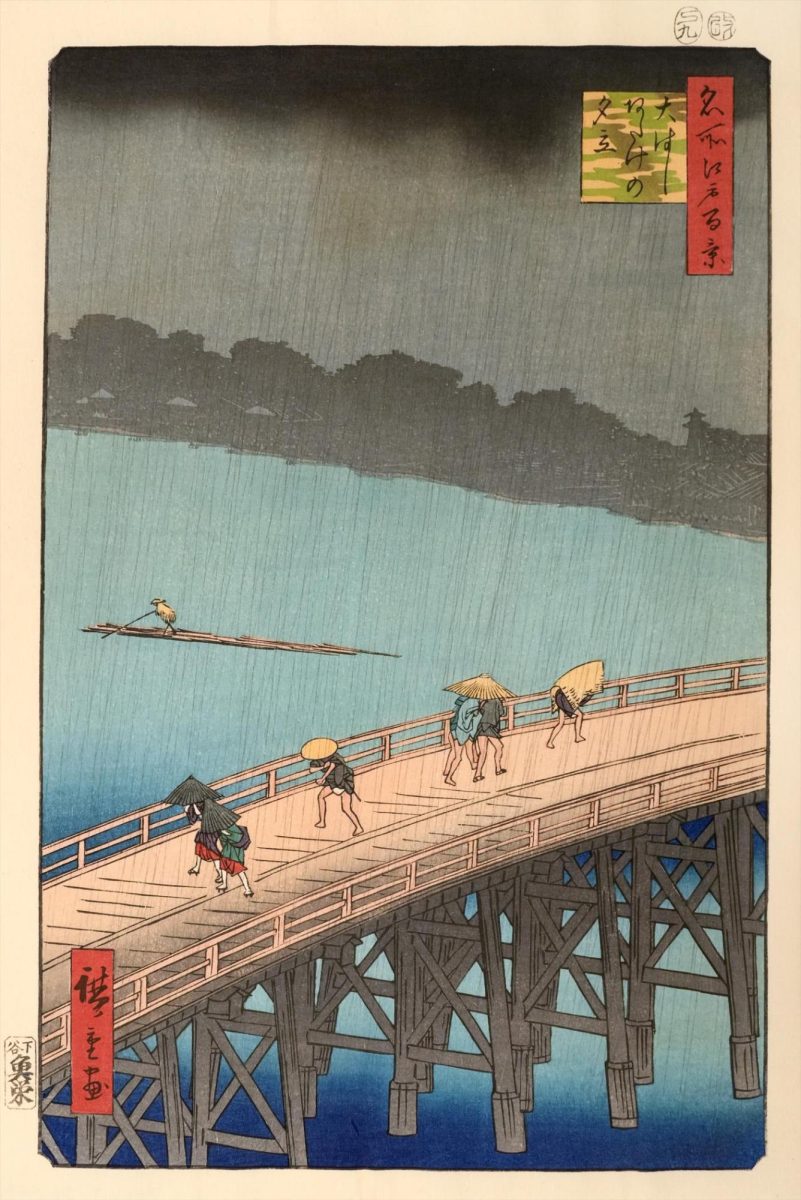It only takes 10 minutes for me to do my makeup in the morning, 10 minutes to walk from my dorm to my first class, 10 minutes to get up from bed, walk to the bathroom, brush my teeth, walk back to my room, tuck myself into bed and put on the next episode of “Sex and the City” before I fall asleep. 24 hours in a day, divided into 10-minute increments. The New York Times asked the extraordinary question: can the average American observe a piece of art and “consider the value of uninterrupted focus” for 10 minutes?
Everyone remembers the daily “Wordle” craze of 2022 and the proceeding “Connections” game of just last year. However, this is far from a word game. The “10-Minute Challenge” is for those who dare to play.
Here are the rules: on every Friday, a new piece of art with a new exercise is published. The viewer’s challenge is to observe the artwork uninterrupted for 10 minutes. One must silence their cell phone, sit back, relax and enjoy the show. My experience as a college student on a Saturday afternoon who knows she has an article due the next day was quite riveting.
3:26 p.m.: Enjoy art. I was looking at Utagawa Hiroshige’s “Great Bridge: Sudden Rain at Atake.” The first few minutes were relatively simple. I moved around the painting and observed every color, line, person, house and texture I could understand. I felt my mind wander at times, thinking about what I just ate, my friends texting me and the article I was about to write, but I came back to the painting, zooming in and out, figuring out the who, what, why, where and how, until the next time I trailed off.
3:31 p.m.: Five minutes left. I was halfway through. I was not bored nor unimpressed, but by this point, I was thinking, “what now?” Before I ventured onto this journey, the New York Times made a point to give me some advice: “Think about how your eyes move through the print. How do its various elements affect your eyes’ path? How could this print have been made? Does this style look like anything you’ve seen before?” All of which I had forgotten during the first five minutes. I thought about each line in the piece. It had to have been drawn, then painted over in… water color? I am not an art expert, but diving into something different was intriguing.
3:35 p.m.: One minute remaining. I was almost there. The last minute was the least productive of all. I had thought all that I wanted to think and wondered all I wanted to wonder. The last minute was reassuring. I was sitting in front of a beautiful Japanese painting that I had no idea existed 10 minutes prior, and now I understand the rain, the river, the people and the sky. At least, I thought I did.
3:36 p.m.: That’s 10 minutes. You made it! I felt accomplished. I clicked the “Quit” button in the top right corner to be sent to an article serving further background on the print. The Japanese woodblock print is part of a series in which Utagawa Hiroshige concentrated on Tokyo (then called Edo) in 1857, where people cross the Sumida River across the seasons. This piece was during the summer rain.
To my surprise, I was frustrated with my performance. The article describes the horizontal v-shapes, the boatman paddling uphill and, “The longer you look,” says the New York Times, “the more you may notice that nothing in the print is quite straight: the crisscross of the structure holding the bridge up; the sharp rain shooting down at an angle; the travelers running both toward you and away from you.”
It took 10 whole minutes, and I did not get any of that. So, what was I doing that whole time? I don’t think my lack of understanding of the “sense of dynamic motion throughout the composition” has anything to do with the fact that I don’t study art. Ten minutes of observing a beautiful print is not challenging. Still, perhaps it is during the age of social media. This “10-Minute Challenge” is a test. The modern attention span is raising concerns. This August, the New York Times conducted a live “10-Minute Challenge” experiment with 7,000 readers. 75% of readers left before the 10 minutes was over, the other 25 staying the full 10 minutes. Not even half could focus for the duration and take a moment out of their day to be completely still. In the last two decades, the average human’s attention span has decreased from 12 to 8.25 seconds. Gen Z’s average attention span is less than eight seconds.
Gen Z is used to 10 minutes of TikTok, 15 seconds to focus on video, then the next. Ten minutes turns into 20, then 30, then an hour. We can focus on 40 different things in 10 minutes on Instagram, but it is exhausting when it comes to one singular piece of content. Who knew how hard it was to relax, take a moment, breathe and think? The 10-minute challenge is so simple yet so difficult to accomplish today. Fifty years ago, it most likely would have been easy. Frankly, spending 10 minutes focusing on one thing should be easy.
I will not say that the New York Times 10-minute challenge has completely changed my perspective on media. I will emphasize how healthy it may be to take just one 10-minute increment out of your day to sit, breathe and focus on one thing: a memory, a song, a scene in a movie, whatever it is.
It only takes 10 minutes.
Heather Jones, FCRH ’28, is a communications major with a film and television concentration from Yardley, Pa.










































































































































































































